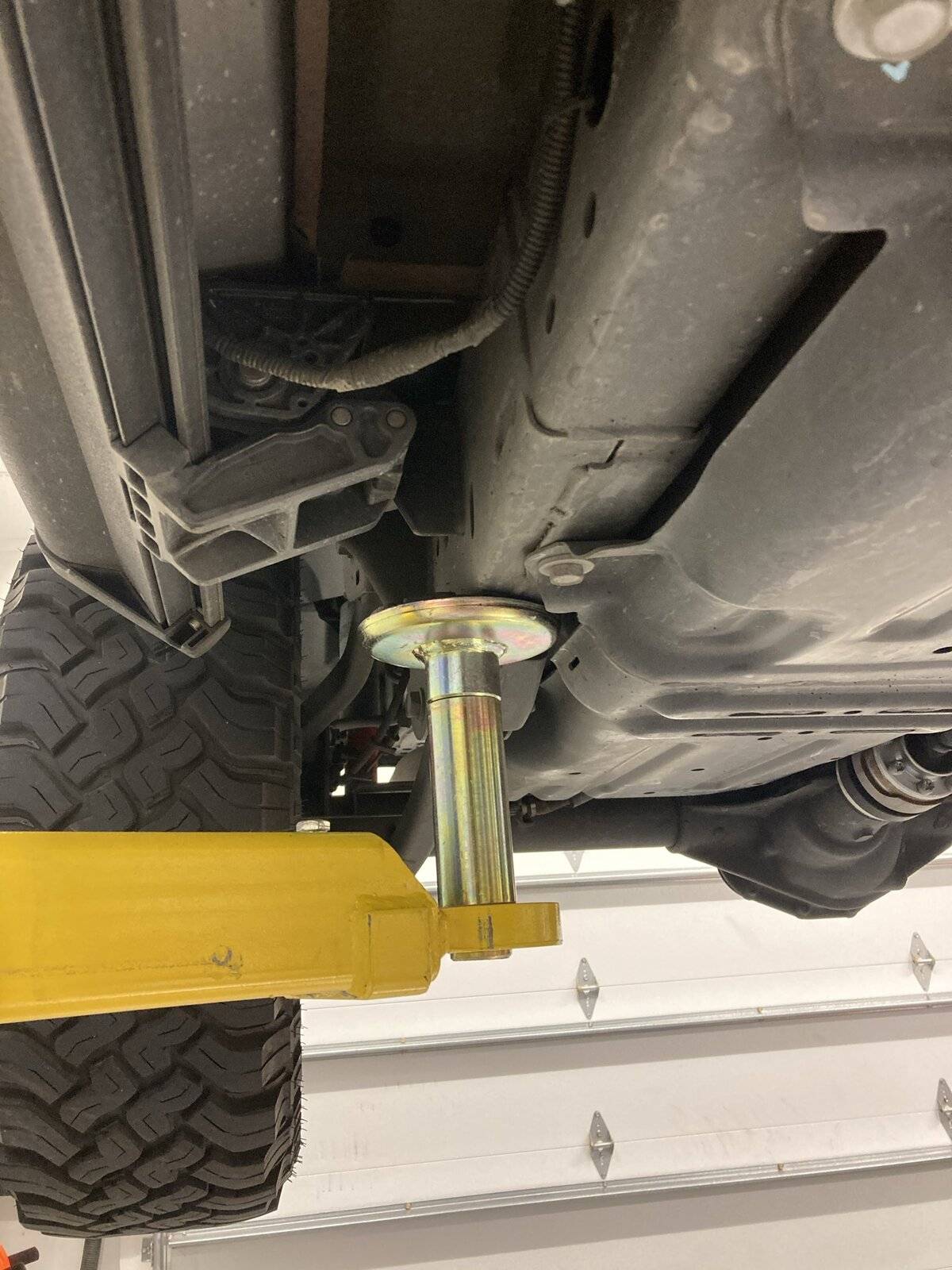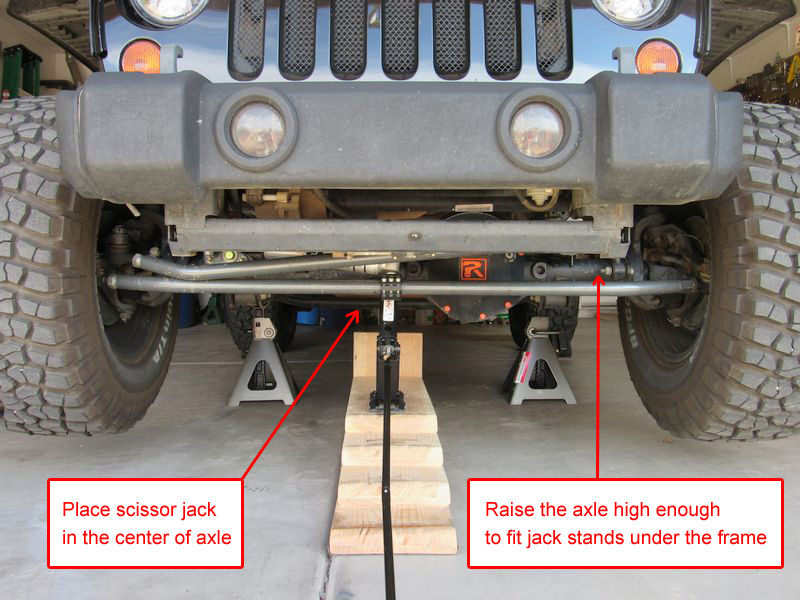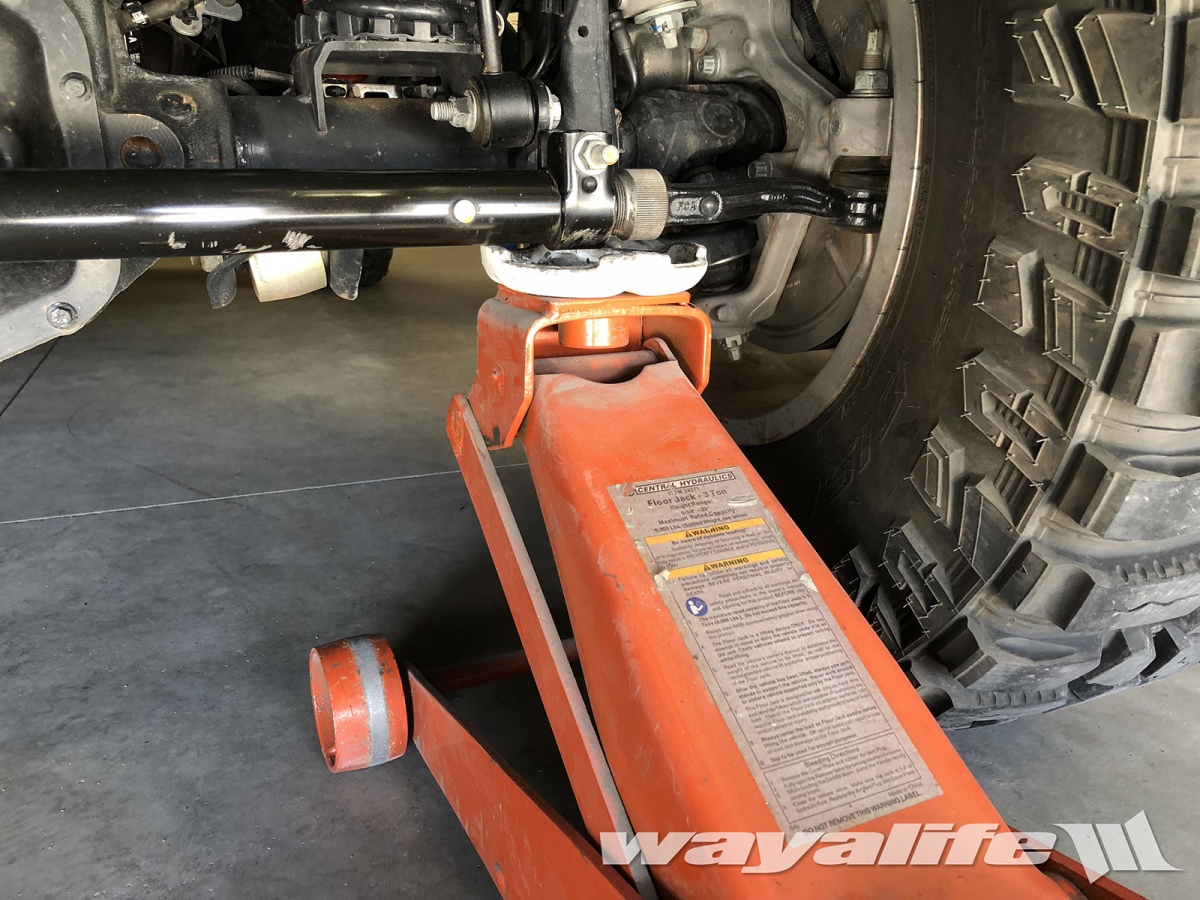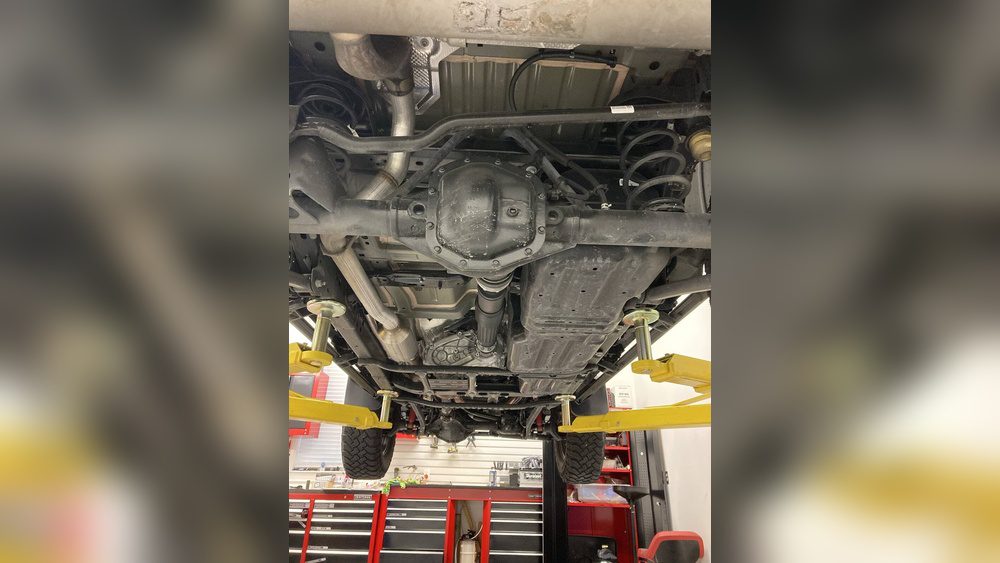If you own a Jeep Wrangler JL, knowing exactly where to jack it up is crucial for your safety and the health of your vehicle. Whether you’re changing a tire, installing new suspension parts, or just performing routine maintenance, using the right jacking points can save you from costly damage and dangerous accidents.
In this guide, you’ll discover the safest and most effective spots to lift your Jeep, how to protect key components like your differentials, and simple tips to keep your Jeep stable while it’s off the ground. Keep reading to make sure you’re jacking up your Jeep Wrangler JL the right way every time.
Jeep Wrangler Jl Jack Points
Knowing the right jack points on your Jeep Wrangler JL is important for safe lifting. Using proper jack points prevents damage and keeps you secure during maintenance. The Jeep Wrangler JL has specific areas designed to support its weight when jacked up. Focus on the rear differential, front differential, and frame for the safest lifting spots.
Rear Differential Lifting Spot
The rear differential is a solid place to lift your Jeep. It is strong and built to carry the vehicle’s weight. Placing the jack under the rear differential, also called the “pumpkin,” allows you to raise the rear end safely. This spot works well for tire changes or rear suspension work. Make sure to center the jack properly to avoid slipping.
Front Differential Considerations
The front differential can also be used for lifting but with care. It sits off-center, which might cause the Jeep to tilt unevenly. This uneven lift can be unsafe or damage parts. Use the front differential only if you have experience or proper equipment. Otherwise, lift the front by the frame or axle tubes for better balance.
Frame And Axle Tube Support
The Jeep Wrangler JL’s frame rails are strong and designed to hold the vehicle’s weight. Placing the jack under the frame rails is a safe method to lift the Jeep evenly. Another good spot is the axle tubes, which run along the axles. Both points offer stable support and reduce the risk of damage. Always use jack stands under these points after lifting for added safety.
Safety Tips For Jacking
Jacking up your Jeep Wrangler JL requires careful attention to safety. Mistakes can cause injury or damage. Follow key safety tips to lift your vehicle securely and confidently. Proper techniques help protect you and your Jeep during maintenance or tire changes.
Using Jack Stands Correctly
Always use jack stands after lifting your Jeep with a floor jack. The jack holds the vehicle up temporarily. Jack stands keep it stable and safe. Place the stands under solid parts like the frame or axle tubes. Never rely on the jack alone to support the Jeep.
Protecting The Differential Housing
The differential housing is strong but delicate. Avoid placing the jack directly on it to prevent damage. Use a rubber pad or a piece of wood between the jack and housing. This spreads the pressure and protects the metal. Focus on lifting near the differential, but support the axle tubes when possible.
Stabilizing The Vehicle After Lifting
After lifting, ensure the Jeep is stable before working underneath. Engage the parking brake and place wheel chocks on the wheels still on the ground. Double-check that jack stands are secure and the vehicle does not rock. A stable Jeep keeps you safe and prevents accidents.
When To Use Each Jack Point
Knowing when to use each jack point on your Jeep Wrangler JL ensures safety and protects your vehicle. Different tasks require lifting the Jeep from specific locations. Choosing the right jack point prevents damage and keeps the Jeep stable. Understanding these points helps you work efficiently and safely on your Jeep.
Tire Changes And Suspension Work
Use the frame rail jack points for tire changes. These points are strong and designed to hold the Jeep’s weight. For suspension work, lift the axle or control arm mounts. Avoid placing the jack under the differential during suspension repairs. Always support the Jeep with jack stands after lifting.
Handling Offset Front Differential
The front differential on the Jeep Wrangler JL is offset. This means it is not centered under the vehicle. Use caution when jacking here. Lifting from the front differential can cause the Jeep to tilt. Instead, use the frame rails or axle tubes to keep the Jeep balanced. Always place jack stands under solid points for safety.
Adjusting For Lift Kit Installation
Lift kit installation requires lifting the Jeep from the frame rails. These points provide stable support for heavy work. Sometimes, the axle mounts may need lifting for suspension changes. Avoid using the differential as a jack point during lift installation. Secure the Jeep with jack stands before working underneath it.

Credit: www.jlwranglerforums.com
Tools And Accessories
Using the right tools and accessories is crucial for safely jacking up a Jeep Wrangler JL. The correct equipment ensures stability and protects your vehicle from damage. This section covers essential tools to help you lift your Jeep properly and securely.
Floor Jack Types
Choose a floor jack that suits the Jeep’s weight and height. Low-profile jacks fit under the Jeep’s frame easily. Hydraulic floor jacks provide smooth lifting with less effort. Avoid small or low-capacity jacks that cannot handle the Jeep’s weight. A sturdy, reliable jack is vital for safe lifting.
Wood Blocks For Extra Protection
Wood blocks add an extra layer of protection between the jack and your Jeep. They help distribute pressure evenly and prevent metal-to-metal contact. Place thick, solid wood blocks under the jack pad. This reduces the risk of damage to the frame or differential housing. Always use dry, strong wood for best results.
Choosing Proper Jack Stands
Jack stands hold the Jeep securely after lifting. Use stands rated for at least the Jeep’s full weight. Adjustable stands allow precise height settings for stability. Place them on firm, level ground under the recommended jack points. Never rely on the jack alone; always use jack stands for safety.
Common Mistakes To Avoid
Jacking up a Jeep Wrangler JL requires care and attention. Avoiding common mistakes keeps you safe and protects your vehicle. Mistakes can cause damage or accidents. Knowing what not to do is just as important as knowing where to jack.
Below are three common errors to avoid when jacking your Jeep Wrangler JL. Follow these tips to make lifting easier and safer.
Jacking On Differential Cover
Never place the jack directly on the differential cover. The cover is thin and can bend or crack under pressure. Use the solid axle tube or designated jack points instead. This helps prevent costly damage to your Jeep’s drivetrain.
Skipping Jack Stands
Relying only on the jack is dangerous. Jacks can slip or fail unexpectedly. Always use jack stands to support the vehicle after lifting. Position the stands under strong frame parts or axle tubes. This provides stable and secure support during repairs.
Uneven Lifting Risks
Uneven lifting can cause the Jeep to tilt or fall. The front differential is offset, which may lead to uneven pressure if used alone. Lift the vehicle evenly by using both sides of the axle or proper lift points. Check stability before working under the Jeep.

Credit: azoffroading.com

Credit: www.wayalife.com
Frequently Asked Questions
Is It Okay To Jack Up A Jeep By The Differential?
Yes, you can jack up a Jeep by the rear differential safely. Avoid the front differential due to offset risks. Always use jack stands under axle tubes for stability and protect the differential housing with a wood block to prevent damage.
Where Do I Jack The Back Of My 2018 Jeep Wrangler Up?
Jack the rear of your 2018 Jeep Wrangler under the rear differential housing or the rear axle tubes. Use a floor jack with a wood block for protection. Always place jack stands under the frame or axle tubes for safety and stability before working underneath.
Is There A Secret Compartment In A Jeep Wrangler?
Yes, some Jeep Wrangler models have small secret compartments, often under seats or inside panels. These offer discreet storage for valuables.
Where To Jack Up The Front Of A Jeep?
Jack the front of a Jeep at the reinforced frame rails or the front axle tubes. Avoid the differential cover. Use a floor jack with a wood block for protection. Always secure the Jeep with jack stands under the axle tubes or frame for safety.
Conclusion
Choosing the right spot to jack up your Jeep Wrangler JL keeps you safe and protects your vehicle. The rear differential is strong and often the best place to lift. Use jack stands every time to hold the Jeep securely.
Avoid placing the jack on weak parts like the differential cover. A wood block can help protect the vehicle and keep the jack steady. Always check that the Jeep is stable before working underneath. Following these simple steps makes lifting your Jeep easier and safer.

